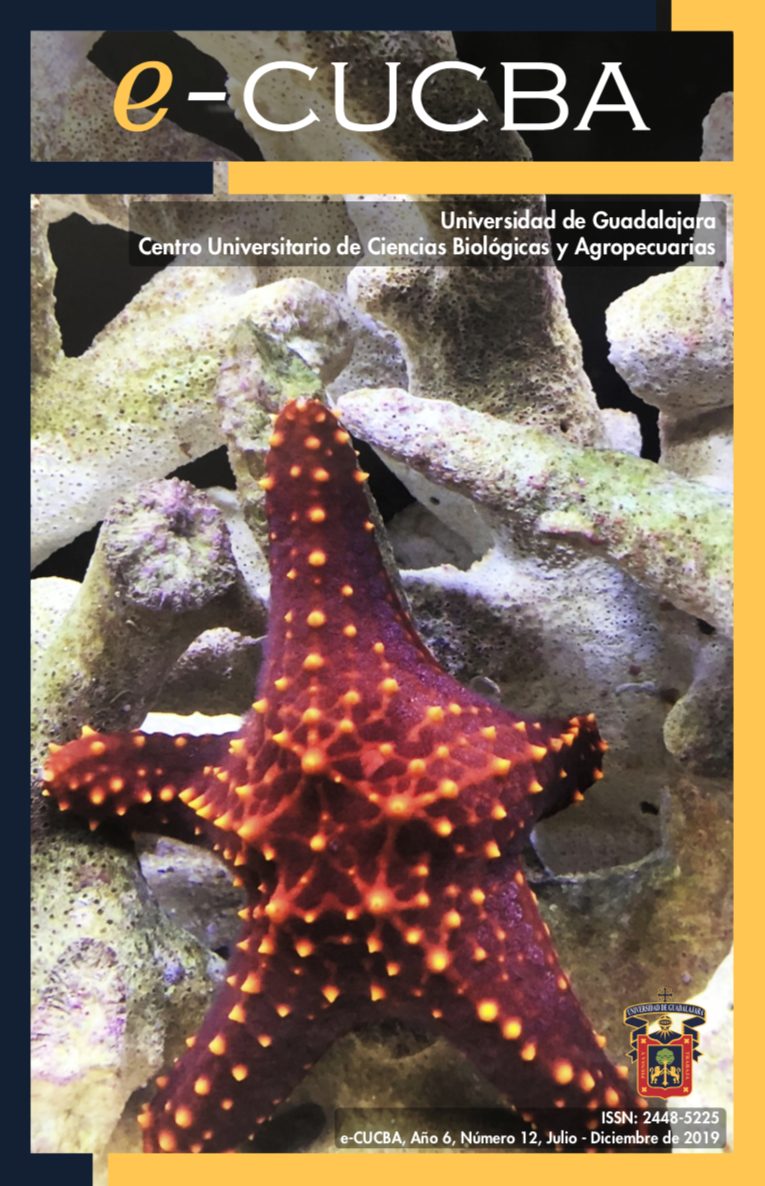Agromorphological variability among blue and red populations of maize from the Mixteca, Oaxaca, Mexico
DOI:
https://doi.org/10.32870/e-cucba.v0i12.134Keywords:
Local adaptation, seed exchange, phenotypic diversity, multivariate analysis, indigenous agricultureAbstract
Local varieties of corn continue to evolve as a result of land parcel domestication by small farmers. These varieties are also influenced by socio- economic, biotic and abiotic factors. Under this context, the objective of this paper is to decribe and classify patterns of phenotypical variations found in the physiological characteristics of the plant, tassle, ear, and seed from samples of blue and red corn populations originating from the mixteca regions in Oaxaca, Mexico. Thirty-two samples of blue corn and eighteen of red corn were collected and characterised. Both types were taken from random land parcels using twenty agromorphological variables. Significant differences were found (P < 0.05) between the red and blue populations with regards to the plant, tassel, ear, and seed. The blue corn sample presented high variations in all characteristics, unlike the red corn, which displayed more homogenous characteristics in the tassel, length and diametre of the ear and dimensions of the seed. In both cases, the patterns of phenotypical variation are linked to plant and ear height, duration of masculine or feminine flowering days and density of stalks on the tassel. Varieties tend to generate grouping patterns according to the origin of the populations. Three significantly different groups were determined in the sample of blue corn. They differed in plant and ear height, tassel description, seed width and thickness. The red grain populations were grouped according to three phenotypes and they differed in duration of masculine and feminine flowering days, plant and ear height and characteristics of ear and cob.






